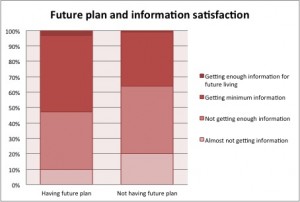Sanriku Railway attracting more people to visit

The train is an important means of transportation in badly affected areas where the Kita Riasu line runs through
The Minato line run by the Hitachinaka Seaside Railway Company in Ibaraki Prefecture was bent out of shape by the Great East Japan Earthquake. Earth beneath the line sank in various places and there was also damage from landslides. The company received government assistance and the 14 kilometers of line was fully restored after four months, but passenger numbers for 2011 decreased by nearly 15 percent to 650,000 people. Bus services ran in place of the train while the line was being restored but people began to use their cars to travel to work or to drop people off etc, and this is believed to have been a significant factor in the fall in revenue.

The situation for Sanriku Railway is more severe, with the areas where the trains pass through having experienced widespread damage. The population in these areas was already in decline before the earthquake, and this was exacerbated by the disaster. Most of the temporary housing that affected residents have moved into are also in places that don’t have good access to the train lines. To get people to use the lines again, local governments need to make decisions on town planning and build new homes. From there it a matter of waiting for residents to come back and start using the trains again. So even after Sanriku Railway has fully restored its lines they won’t be easily used by affected residents for some time.
The operations of many local lines nationwide were unprofitable even before the earthquake. It is difficult for them to secure sufficient revenue through their core business of transporting passengers, and the earthquake has made this more so for the lines which travel through affected areas. The role of local lines to the public though means that they can not be simply discontinued because they are making a loss. They are an important means of transportation for those not readily able to travel about, such as students and the elderly. The coastal area that the Kita Riasu line runs through has a lot of steep inclines. When heavy snow falls, driving becomes dangerous, and buses and other vehicles can not be relied upon.

Sanriku Railway President Masahiko Mochizuki in front of Miyako Station
Mochizuki explains the significance of overcoming the current difficulties, saying that when communities are re-built the Sanriku lines will be indispensable to people’s lives. But what will come first – the towns or the transportation? Sanriku Railway is a means of getting the public around, and its stations are central points where people gather. There is a strong belief that if the stations become portals for people outside the region that this will contribute to recovery of the towns.
Tweet




